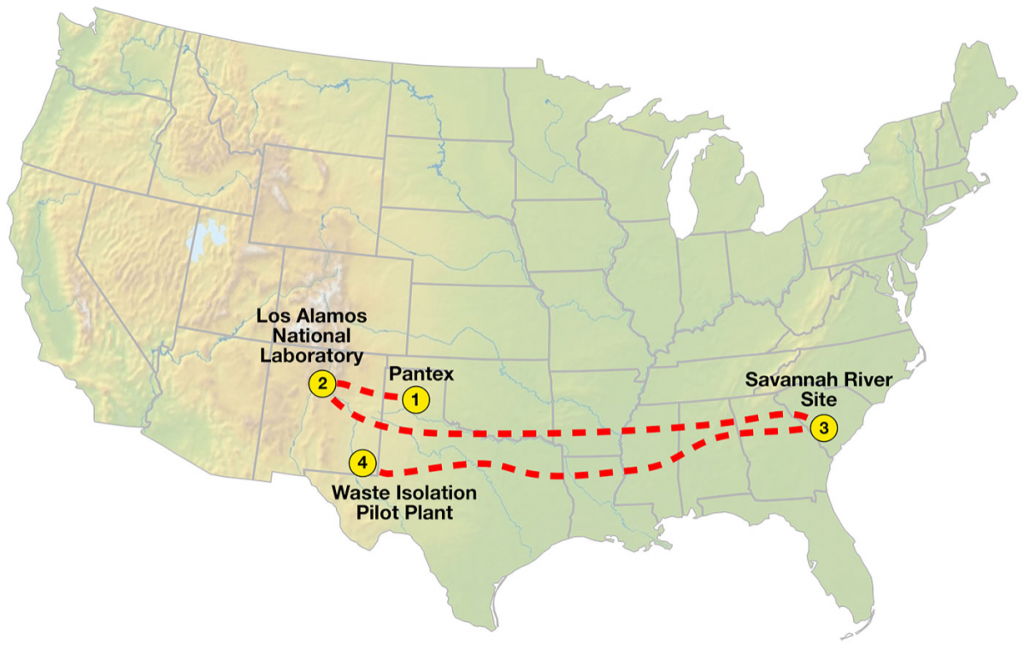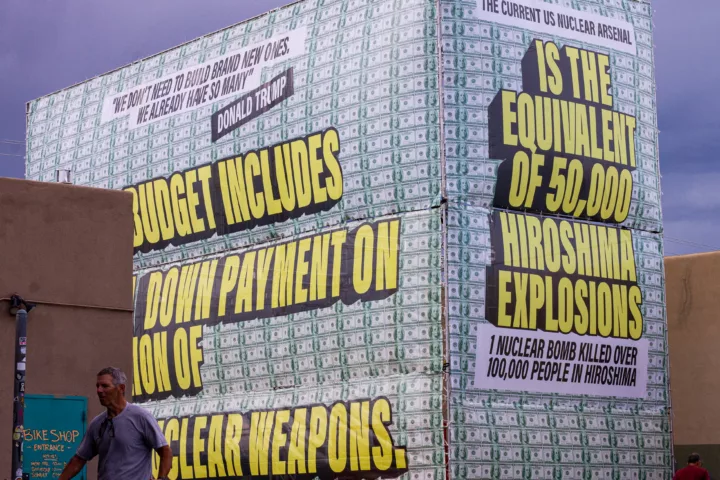The original mission of the Waste Isolation Pilot Plant (WIPP) in southeastern New Mexico had two specific stipulations: it was to be the FIRST and only operating underground nuclear waste repository in U.S; and it is ONLY authorized to take a certain kind of nuclear weapons waste – legacy transuranic (TRU) waste. In December of last year, the U.S. Department of Energy published a notice of intent to expand WIPP. The notice details expansion of the plant in two ways: capacities and types of waste permissible, as well as extended storage/operation timelines. The federal government’s plans would expand the size of the nuclear weapons dump to more than twice its current size and more than is allowed: Federal law and legal agreements with New Mexico clearly limit the amount of waste at WIPP, but the expansion would allow more than that capacity (as described in the April 2020 National Academy of Sciences Report “Review of the Department of Energy’s Plans for Disposal of Surplus Plutonium in the Waste Isolation Pilot Plant.”) This means an increased volume of waste, as well as an increased number of shipments travelling to WIPP over the entire rest of the century.
 The plutonium nuclear waste in the WIPP expansion is a different and more dangerous form, and will remain dangerous for hundreds of thousands of years. If WIPP becomes allowed to store more dangerous waste, the transportation of this waste will affect not only New Mexicans, but those living along the entire carrying route across the country. The plutonium waste will travel TWICE along Hwy 285; 3,300 miles total and across 12 states. The current nuclear waste transport system is already stressed and troubled by high driver turnover, old trucks, and poor worker morale–and would struggle with an increased workload. Despite this fact, the federal government’s is attempting to put in place these expansion plans that would transport each shipment of deadly waste past our homes twice, over and over for the rest of the century.
The plutonium nuclear waste in the WIPP expansion is a different and more dangerous form, and will remain dangerous for hundreds of thousands of years. If WIPP becomes allowed to store more dangerous waste, the transportation of this waste will affect not only New Mexicans, but those living along the entire carrying route across the country. The plutonium waste will travel TWICE along Hwy 285; 3,300 miles total and across 12 states. The current nuclear waste transport system is already stressed and troubled by high driver turnover, old trucks, and poor worker morale–and would struggle with an increased workload. Despite this fact, the federal government’s is attempting to put in place these expansion plans that would transport each shipment of deadly waste past our homes twice, over and over for the rest of the century.
There is also concern over the packaging of this different waste; any accident releasing the plutonium waste into the air, due to a transportation accident, packaging corrosion or container degradation, or any combination of events, would contaminate and poison the area for hundreds of thousands of years, and endangers the health of the local communities and future generations.
“If you are in one of the communities along the route, you have something to worry about,” said one high-level Energy Department official, who spoke on condition of anonymity.
Unless New Mexico says NO to WIPP expansion, other disposal locations will not be developed, and WIPP will always be the only dump site, which is not fair. New Mexico never agreed to bear the burden of being the country’s only nuclear waste repository. The federal government is not being transparent about expanding WIPP, even though it has clearly admitted its intention in published documents. By repeatedly refusing to discuss its plans with the public, most New Mexicans are not even aware of those plans. However, this fight is not over, and this issue affects ALL of us concerned about public health and safety, environmental justice, and governmental transparency.

